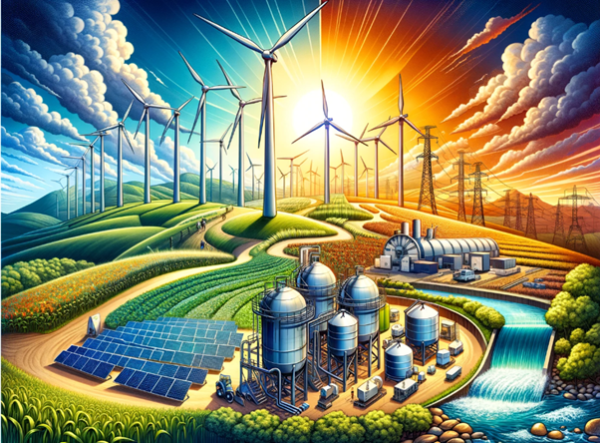Eco-Warriors
In the US, in the early 200s, Al Gore was at the centre for environmental activism. During his role as Vice President from 1993 to 2001 he was involved with a number of environmental initiatives. He collaborated with the Alliance for Climate Protection to make We Can Solve It, a web-based organisation for spreading awareness for climate change. In 2007, he collaborated with Richard Branson to make the Virgin Earth Challenge, which awarded $25 million to the first person or organisation to produce a viable design that resulted in the removal of atmospheric greenhouse gases, as well as creating a series of benefit concerts to promote environmental issues called Live Earth. In 2008 he gave a speech to challenge the US to commit to producing all electricity from renewable sources. He was also the joint winner of the 2007 Nobel Peace Prize with the Intergovernmental Panel on Climate Change for their efforts to build up and disseminate greater knowledge about man-made climate change, and to lay the foundation for the measures that are needed to counteract such change.
The Global Day of Action was also started in 2005. This global event in response to the Kyoto Protocol, was a direct-action protest format used by environmental initiatives in connection with Global Climate Campaign. They wanted to focus world attention on the anthropogenic effect that humans are having on global warming. In 2007 citizens in 84 countries participated in the Global Day of Action event, called Kyoto Now!, which coincided with the UNFCCC’s (United Nations Framework Convention on Climate Change) conference in Bali. Some of the top groups and organisations in the event included Campaign against Climate Change, Stop Climate Chaos, and Greenpeace.

Energy Independence Activists
The want for energy independence grew in the 2000s, with oil prices rising many countries put more effort into producing their own energy, particularly through the use of renewable energy. In the US, the Energy Independence and Security Act of 2007 sought to expand the production of renewable fuels, reduce US dependence on oil, increase energy security, and address climate change. It increased the supply of alternative fuel sources by setting a mandatory Renewable Fuel Standard, introduced a cost-shared Renewable Energy Innovation Manufacturing Partnership Program to make awards in support of R&D for renewable energy, and improved energy efficiency in lighting, appliances, and buildings.
In the UK the 2002 Energy Review set a target of 10% of electricity to be produced by renewable energy by 2010/11. It also established a goal of 5% of total transport fuel to be sourced from renewable sources, like biofuel, by 2010, under the Renewable Transport fuel obligation. The UK showed commitment to gaining energy independence with the help of renewable energy, not just focusing on nuclear but other aspects like wind and solar as well.

Technological Innovators
In terms of renewable energy in the 2000s, most of the focus was on wind and solar energy, with biogas and hydropower also making some developments over the decade. By the end of 2007, more than 94,000 MW of electricity generating wind turbines were operating in 60 countries. From 2000. Global wind power continued to grow at an average cumulative rate of 29%, and more than 20,000 MW of new capacity was installed around the world. In the European Union wind capacity went from 13GW in 2000 to 84GW in 2010, an over 600% increase in a decade, showing that wind power was very much gaining traction as a form of renewable energy. Solar energy was also developed to be used to improve the demand for commercial electricity in buildings, as well as moving into domestic and commercial water heating. By the late 2000s Solar photovoltaics had also grown exponentially, mainly in Europe, growing from 10GW of capacity in 2000 to 30GW of capacity in 2010, tripling in size. Compared to other decades, the 2000s showed the highest jump in development and implementation for renewable energy technologies, most likely due to the fact that R&D had become much cheaper compared to 20 years ago, and that global warming and climate change were becoming a noticeable and recognisable threat to governments around the world.

Energy Policy Advisors
The 2000s also saw mass change in policy globally to help fight global warming and climate change, particularly through the use of renewable energy. The Kyoto Protocol, first enforced in 2005, was a global initiative that implemented the objective of the UNFCCC to reduce the onset of global warming by reducing greenhouse gas concentrations in the atmosphere to a level that would prevent dangerous anthropogenic interference with the climate system. The protocol’s first commitment, which ran from 2008 till 2012, involved 36 countries who fully committed to compliance, and the greatest emission reductions were seen in the former Eastern Bloc, due to the dissolution of the Soviet Union. Despite all the countries that took part in the protocol, global emissions increased by 32% from 1990 to 2010.
In the UK, the 2008 Climate Change Act vowed to an 80% cut overall in six greenhouse gases by 2050, following the Kyoto Protocol. In turn the independent Committee on Climate Change was created to advise the UK and devolved Governments and Parliament on tackling and preparing for climate change. In 2003 and 2007, the UK wrote two Energy white papers, detailing a formal energy policy for the UK recognising that a limit on carbon dioxide emissions was going to be necessary, and committing the UK to a 60% reduction of CO2 emissions by 2050. The threat of global warming and climate change was largely recognised by the UK, and the change in policies shows that there was some commitment to fighting it.
The US in the 2000s, especially under the Bush Administration, was not as effective in enforcing renewable energy policies. Despite the Energy Policy Act of 2005 promoting renewable energy and promising more funding for the sector, the reality was the opposite, with funding slashed for renewable energy and tax incentives given to big oil companies. In addition, Bush and the Congressional Republicans put under fire many environmentally friendly acts, including the Clean Air Act, the Clean Water Act, the toxic wastes Superfund, the Right to Know Act, the Marine Mammal Protection Act, and many more. Despite renewable energy having the potential to be a reliable source of energy production for many countries in the 2000s, the capitalist benefits that came with the use of fossil fuels through big companies seemed much more appealing than using funding for renewable energy which would not create a great profit for the country.

